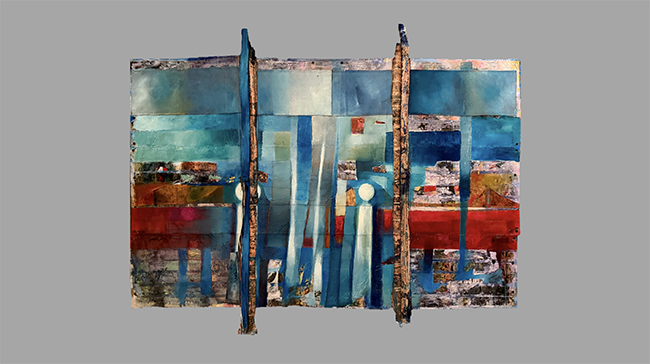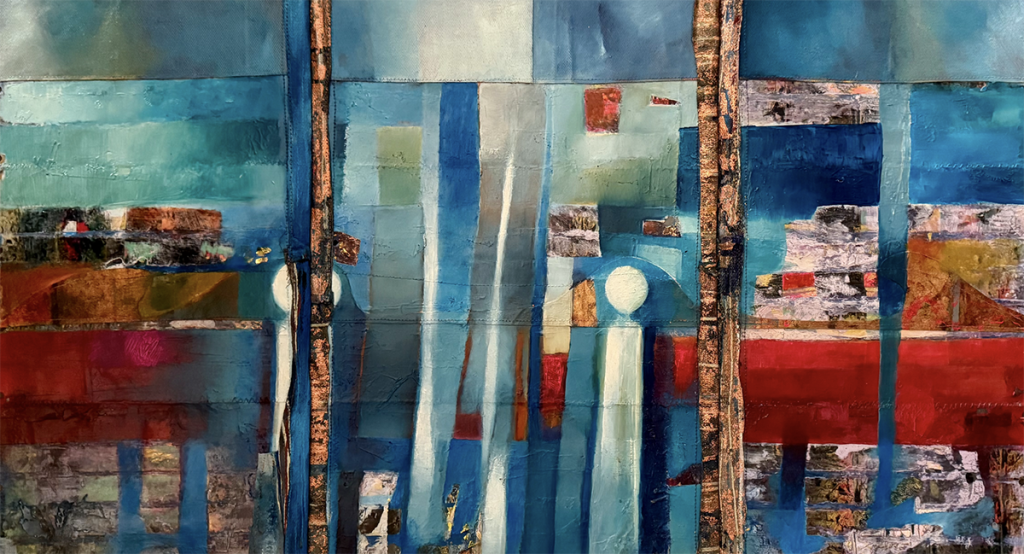Miguel Barros is an artist whose work asks us to pause and consider the depth of our connection with the world around us. Born in Lisbon in 1962, Barros holds citizenship in Portugal, Canada, and Angola, a rare mix that has shaped his artistic lens with the richness of multiple cultural perspectives. In 2014, he relocated from Angola to Calgary, Alberta, opening a new chapter in his creative life. His education in Architecture and Design at IADE Lisbon, completed in 1984, provided him with a precise foundation in structure and spatial awareness. Yet it is painting that allows him to move beyond calculation and into imagination, crafting a practice where form and feeling meet. His works sit at this intersection—technical yet poetic, grounded yet dreamlike—revealing a vision that carries echoes of both his personal journey and the landscapes that continue to inspire him.

Gardens of My Life
Barros’s Gardens of My Life is not just a painting or a series of images; it is a statement about memory, imagination, and belonging. He begins with a symbolic departure: “And from the Pier of the Columns in Lisbon, Portugal, I set sail into the world.” That pier, Cais das Colunas, becomes both a physical landmark and a metaphorical point of departure. From there, he carries not only his dreams but the imagined paradises that have shaped him since childhood.
The garden is his recurring symbol. It is not simply a patch of cultivated ground but an inner landscape where fears, doubts, and hopes coexist. In his telling, these gardens are “secret and enchanted places,” realms that open themselves to him as both child and artist. This blending of childhood play and adult reflection gives Gardens of My Life its depth: it is as much about returning as it is about moving forward.
He describes these gardens as dreamscapes where time suspends itself. Each step, each gesture, becomes an act of creation. This mirrors his architectural background, where structure and detail matter. But unlike the rigid frame of buildings, these gardens are fluid, full of movement, alive with color, sound, and scent. They invite us into a place where imagination sets the rules, where the garden is not a backdrop but a living entity that holds him within it.
Barros insists that every detail matters—the insects, the petals, the whispers of wind. Nothing is too small to be part of the whole. The tiniest creatures take on the role of companions, “dancing among the leaves and petals,” becoming characters in silent stories. This attention to life’s subtleties transforms his work into more than visual experience; it becomes an immersive meditation on presence.
The atmosphere he creates is one of enchantment. Fountains sing, trees embrace, birds and butterflies weave in and out of light. Even silence takes on the quality of music. These are not embellishments but essential truths of his vision. For Barros, the garden is a teacher, revealing that beauty resides not in grandeur but in the delicate rhythms of existence.
A theme that runs throughout Gardens of My Life is the idea of belonging. He does not stand apart as an observer but enters the garden as one who fuses with it. The landscapes, both real and imagined, absorb him. This intimacy points to a larger belief: that we are not separate from nature but integral to it. In a time when our relationship to the environment often feels fractured, his work reminds us of our place within it.
Time in these gardens does not obey ordinary rules. It stretches, softens, and sometimes disappears altogether. Within this suspension, Barros finds what he calls peace—the kind only nature can give. This is not escapism but a search for grounding, for the certainty that life offers more than chaos.
The painting becomes both personal refuge and universal symbol. The gardens are his, born from his memories and imagination, yet they speak to anyone who has felt the need for sanctuary. They are places where love for life transforms into protection, where the eternal reveals itself through the simplest details: the warmth of sun, the sound of water, the flight of a firefly.
In the end, Barros’s Gardens of My Life is a declaration of continuity. He does not leave these gardens behind but revisits them again and again. They are inexhaustible sources of meaning, beauty, and truth. To step into them is to glimpse how memory and imagination, when fused with attention to nature, can create not only art but a way of being.

